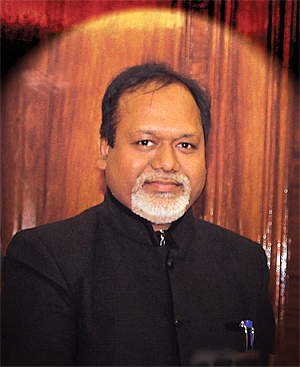INDIAN ARMED FORCES CHIEFS ON OUR RELENTLESS AND FOCUSED PUBLISHING EFFORTS

The insightful articles, inspiring narrations and analytical perspectives presented by the Editorial Team, establish an alluring connect with the reader. My compliments and best wishes to SP Guide Publications.

"Over the past 60 years, the growth of SP Guide Publications has mirrored the rising stature of Indian Navy. Its well-researched and informative magazines on Defence and Aerospace sector have served to shape an educated opinion of our military personnel, policy makers and the public alike. I wish SP's Publication team continued success, fair winds and following seas in all future endeavour!"

Since, its inception in 1964, SP Guide Publications has consistently demonstrated commitment to high-quality journalism in the aerospace and defence sectors, earning a well-deserved reputation as Asia's largest media house in this domain. I wish SP Guide Publications continued success in its pursuit of excellence.
- All about HAMMER Smart Precision Guided Weapon in India — “BEL-Safran Collaboration”
- US to sell $93 million precision artillery, Javelin and Excalibur projectiles to India
- US to sell $93 million precision artillery, Javelin and Excalibur projectiles to India
- India, Germany deepen defence ties as High Defence Committee charts ambitious plan
- True strategic autonomy will come only when our code is as indigenous as our hardware: Rajnath Singh
- India-Israel Joint Working Group Meeting on defence cooperation to boost technology sharing and co-development
- G20 Summit: A Sign of Global Fracture
Editorial

This year has been very eventful so far with the onset of National Elections, expectations of a new government and budget, and tangible tension on the Indo-Pak border. The horrific attack on the CRPF convoy and the reactions have left a deep scar on the Indo-Pakistan relations. The former Army Chief of the Indian Army General Deepak Kapoor gives out the narrative which led to the Balakot air strike. He said that, “The Indian Air Force needs to be complimented for a well planned, coordinated and meticulously executed strike on a crucial Jaish terror hub at Balakot, located in Khyber Pakhtunkhwa province of Pakistan. While going ahead with Balakot strike, the government simultaneously sent out signals to indicate that it did not want to escalate matters to a full-fledged confrontation with Pakistan. Addressing of the press conference, the Foreign Secretary (not the Defence Secretary) stressed on the ‘preemptive’ and ‘non-military’ nature of the strike intended to convey to the international community and the other side that India had acted against terror and not Pakistan and its military. He ended with a note of caution by stating that, “We need to move away from a hyped up national fervour bordering on jingoism orchestrated by a hyperbolic media to a balanced view on national security issues. A realistic assessment of our capabilities and limitations is imperative to adopt a mature approach.”
This issue has a focus on Tactical Communications and we have articles highlighting the future trends in Tactical Communications driven by technology and also on the TCS program of the Indian Army, both written by Lt. Gen. Katoch (Retd.) former DGIS. As per the Global Market Insights, Inc., the global tactical communications market will value around $30 billion by 2024, growing at a CAGR of more than three percent in 2017-2024. Replacement of outdated legacy systems is expected to drive market growth. The author highlights some of the technologies like VSAT Networks; Ethernet and VoIP; 3D Printing and Synthetic Telepathy; Quantum Communications and concludes Tactical and battlefield communications are improving rapidly and with the new generation of high throughout satellites are making it increasingly cost effective for the military.
Indian Army is on the verge of a major change in small arms with the induction of the state of art assault rifles, machine guns and sten guns for close quarter battle and sniper rifles. New technology in small arms trends include better reliability, longer life, more lethal ammunition as per operational requirement and better sighting systems which improve accuracy and first shot kill. Vishal Thapar lists the Gold Standard in Small Arms and profiles the leading rifles being used.
The article on electro-optical devices by Lt General Naresh Chand (Retd) highlights that such devices enhance the image and thus the raison d’etre for multiple applications for the armed forces, medical and commercial devices. The trend is to integrate other devices with electro optical systems like thermal images and laser sensors to make it an all weather, day and night system for better image resolution. Laser applications include Laser radar called Ladar (Laser detection and ranging), laser range finder (LrF) and a laser pointer. The article also includes some examples of the latest EO systems globally.
The issue as usual ends with Special Reports and the news digest.
Wish you discerning readers happy reading!





